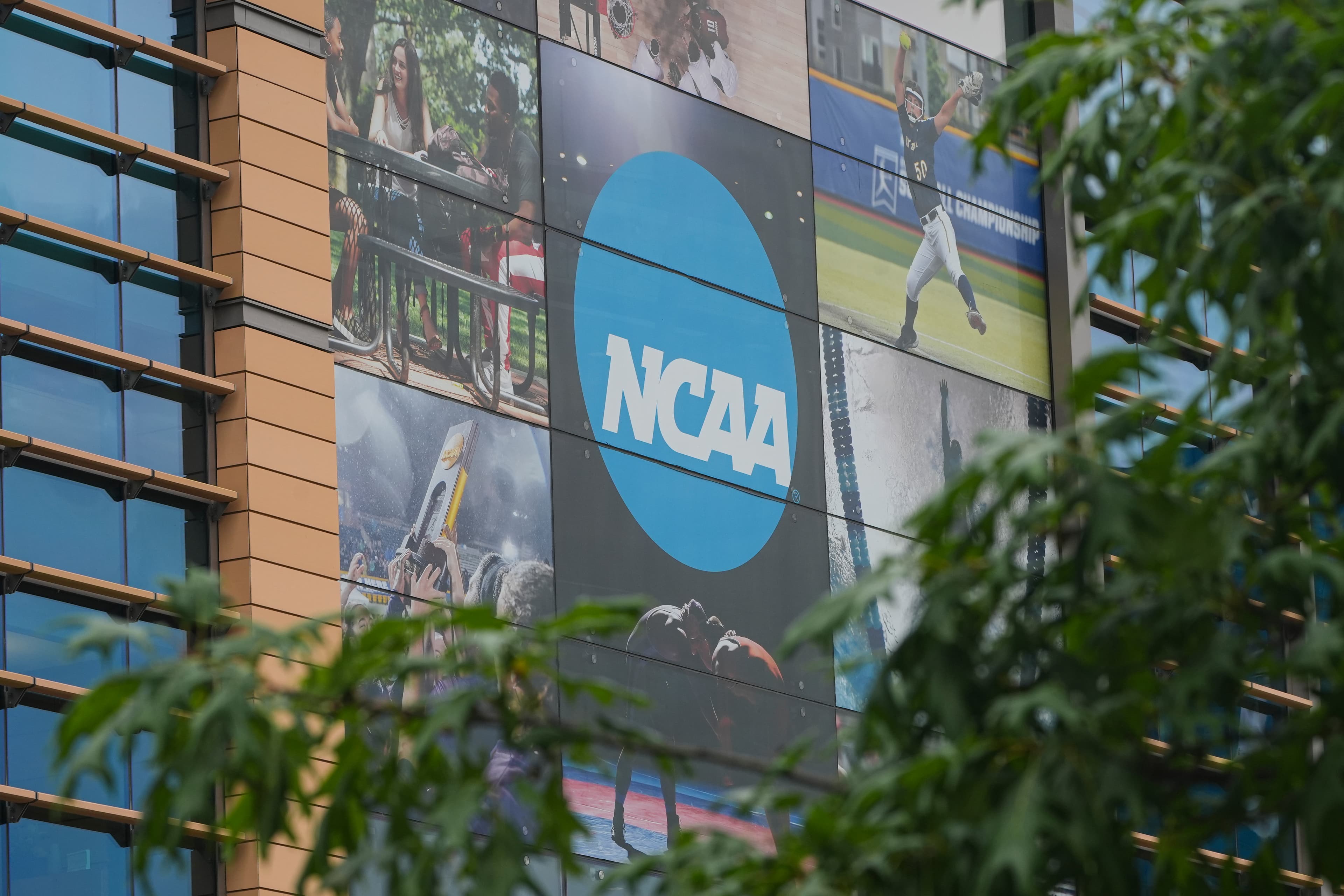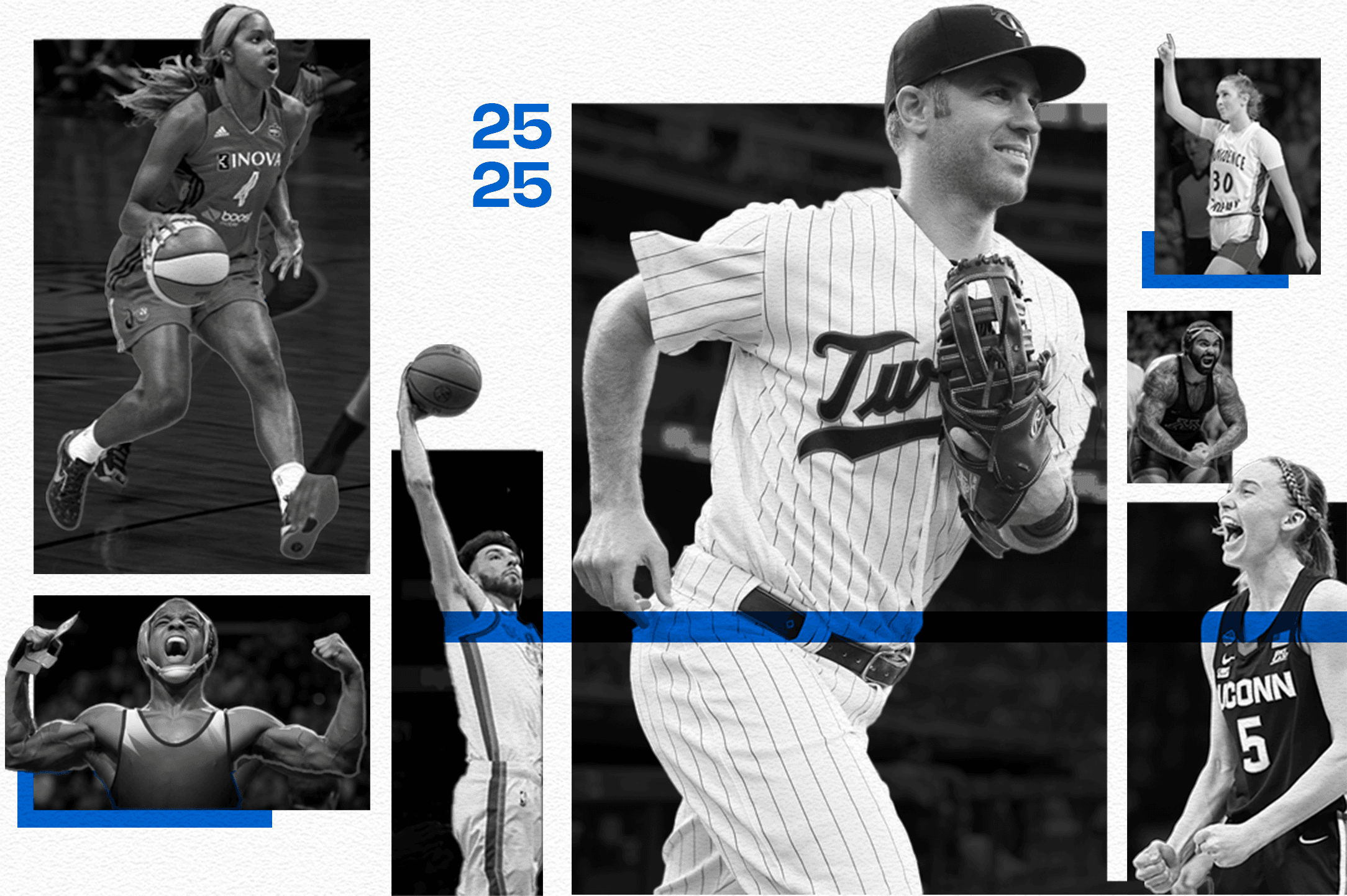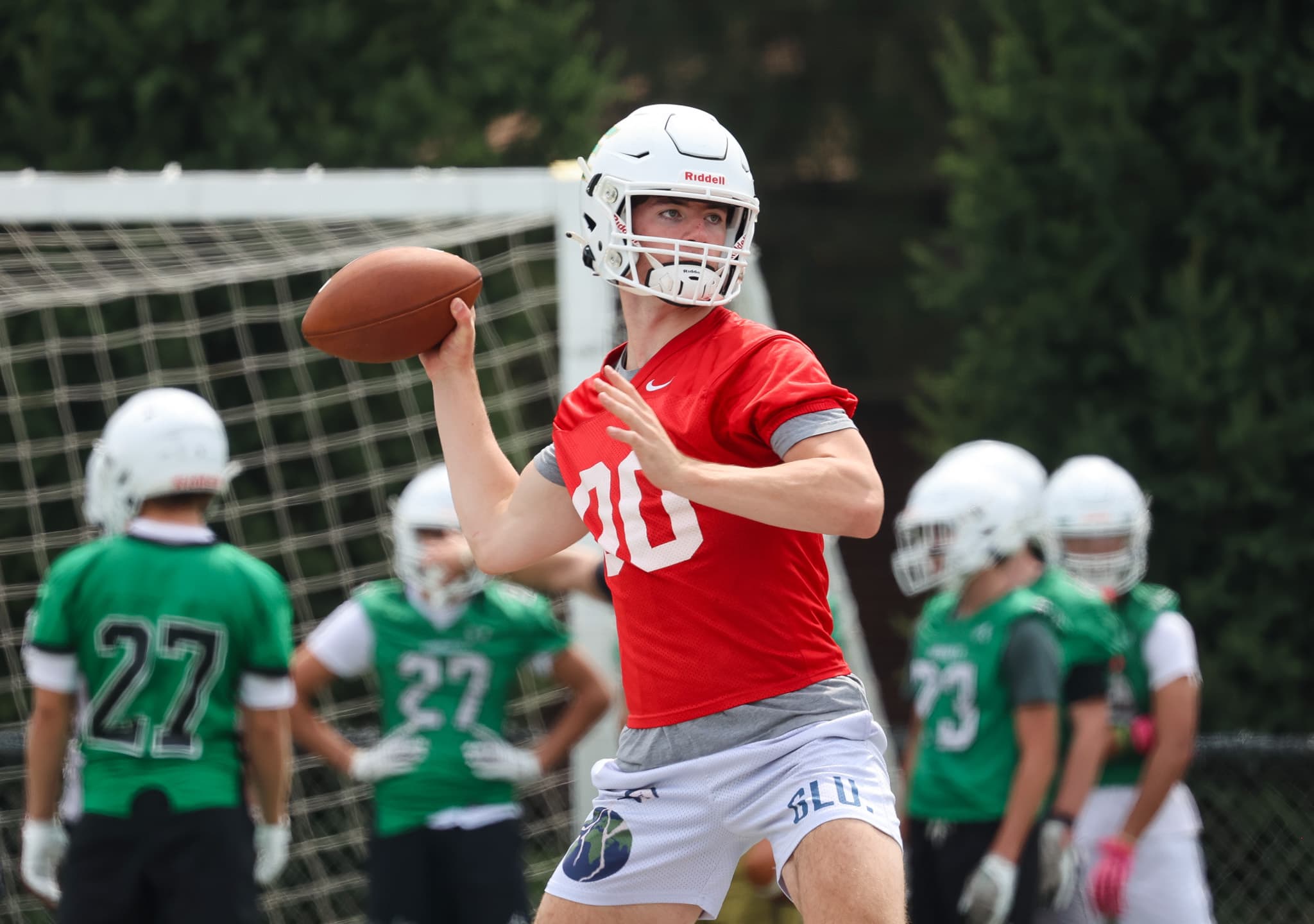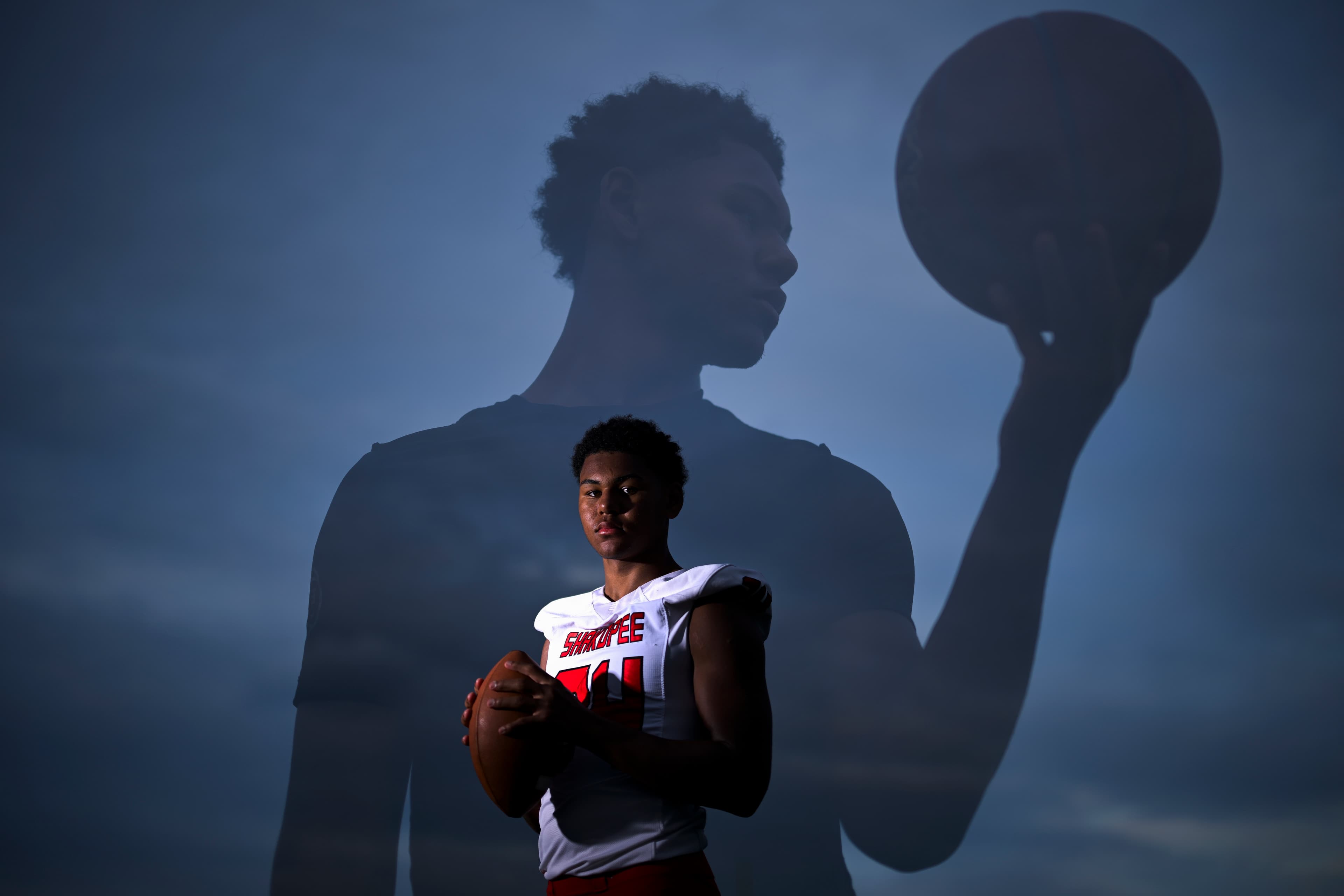Analysis: Minnesota high school recruits feeling House settlement impact
High school prospects have decisions to make, with some already hiring agents to prepare for NIL and revenue-sharing talks in recruiting.

The Minnesota Star Tribune
Word spread at AAU basketball and volleyball tournaments between slam dunks and service aces. At football camps between touchdowns and tackles. And at workouts between lifting and conditioning.
News about the approval in court of the House v. NCAA settlement popped up on cellphones for Minnesota high school athletes and others nationally this summer.
Cue the dollar sign emoji. Wink, wink.
Direct payments from colleges to athletes in the form of name, image and likeness (NIL) and revenue-sharing are now allowed thanks to the $2.8 billion antitrust lawsuit that argued the NCAA and its member schools unlawfully restricted past student-athletes from profiting on NIL.
“It’s huge,” said four-star senior Rocori offensive lineman and Gophers recruit Andrew Trout, who is considering signing during his senior year of high school with a sports agency to represent him in negotiating future deals for use of his name, image and likeness.
“I think college guys deserve to get paid because we’re putting our bodies on the line. Getting [NIL and scholarships] is a huge aspect, but I think college athletes deserve to get that extra revenue-sharing paycheck, too.”
The Minnesota Star Tribune heard from several Minnesota athletes, coaches and agents involved with navigating the aftermath of the House settlement and the ever-changing climate in the world of recruiting.
In 2021, NIL started at the college level, but most athletes were leaning on school collectives to help them figure out contracts and endorsement deals.
Since then, sports agencies representing professional athletes with contracts, marketing and brand building have specific agents pursuing college athletes and now prep clients, too.
“The educational component is a lot,” said Blake Baratz, Team IFA president and founder, who represents Minnesotans and current Gophers football playersJaxon Howard, Deven Eastern and Emmanuel Karmo. “There are so many people coming at them. When we get referred to a high school player, it’s before they start the [college recruiting] process in a perfect world.”
Last year, hundreds of Minnesota seniors made their commitments to play sports for Division I schools — likely with NIL talks with coaches — before signing financial and athletic aid agreements.
Related Coverage
Current high school athletes have even more on their plates, though, and some are already signing with agencies before pursuing NIL and revenue-sharing contracts — from a few thousand to even millions of dollars a year — marking a transformative shift in how top prospects make their college decisions.
“If it comes down to two schools who are very comparable and I can’t decide, I think NIL [and revenue-sharing] can definitely play a part in that decision,” said East Ridge basketball standout Vienna Murray, who has 25 D-I offers. “It’s crazy to me how the game has changed over the years in such a little amount of time.”
On July 1, schools that opted in to the settlement could pay athletes with a $20.5 million cap from their budget. Also, part of the House settlement was increased scholarships for revenue-generating sports such as football and basketball, but many Olympic sports can’t afford to add many scholarships because they don’t generate much revenue.
“The whole college football recruiting side is scary,” said Maple Grove football coach Adam Spurrell, whose team won the Class 6A state title last year. “You have these five-star kids who are getting as much money as they are. We haven’t had those kids yet. But when you’re throwing millions of dollars at players and they’re 18 years old, there isn’t always good that comes with that.”
More money and scholarships, more opportunities?
On the eve of when college coaches could talk to high school volleyball players and offer scholarships in mid-June, Gophers coach Keegan Cook jumped on a Zoom call with AAU club directors and recruiting coordinators from across the country, including from Minnesota.
The main topic of discussion was what to know about changes coming with NIL and revenue-sharing.
“He was talking to us about the trends we were about to see with the NCAA and the settlement,” Wayzata volleyball coach and Minnesota Select club director Scott Jackson said. “He was trying to help us understand how we can help athletes best navigate that overall.”
What Jackson and other coaches learned was this: Most D-I schools would opt in to revenue-sharing — and eventually 319 of 364 schools did, including every power conference program, according to the College Sports Commission, a new organization that oversees revenue-sharing and NIL in college sports.
“Some schools opted in but are not doing any revenue-sharing,” Jackson said. “They are educating kids about what they can and can’t do [for NIL], but is revenue-sharing going to be part of the process for many midlevel D-I schools?”
The answer could be this: not really. And how each school divides its revenue with athletes is up to the leaders of each institution. Football, basketball, volleyball and hockey athletes are expected to benefit from that money at the University of Minnesota, for example. St. Thomas, which will debut a new arena this year, is prioritizing basketball and hockey.
The settlement approval hinged on not eliminating roster spots for current athletes. Increasing the number of scholarships per sport potentially creates more opportunities but can also pose challenges.
For example, nonrevenue sports such as baseball, gymnastics, soccer, swimming and wrestling traditionally divided partial scholarships among the entire roster. But the settlement now gives those sports the chance to offer more full-ride scholarships to players, making roster spots even more competitive.
“It’s unbelievable,” said former Waseca baseball coach Tink Larson, who tracks recruiting commitments for the state’s coaches association. “There are a few of those big-time schools that are offering the full amount. I was just talking to a [college] assistant that said they had 25 scholarships … and they have other money they can give out above scholarships.”
Baseball scholarship limits went from 11.7 to 34 for D-I programs. Other Olympic sports more than doubled previous numbers, including men’s and women’s soccer to 28, men’s and women’s swimming to 30 and men’s and women’s track to 45.
To compare, D-I football teams now have a maximum of 105 scholarships. Previously, the NCAA limited the number of full scholarships to 85 per football team, but schools were allowed to have nonscholarship players, or walk-ons. Men’s and women’s basketball programs, meanwhile, each have 15 scholarships, up from 13 scholarships for men, but that’s when they could also allow additional roster spots for walk-on players.
Higher-profile sports likely will use their max number. Meanwhile, Olympic sports in jeopardy of being cut are not likely to use all of their full scholarships since they typically struggle to generate revenue.
Jackson’s daughter, Hannah, a volleyball standout at Minnetonka last year, is on scholarship as a freshman at Bryant, which decided to remain at 12 scholarships instead of the new limit of 18 for her sport.
“If there’s not a tree out there growing money, they aren’t going to commit more than they already have been,” Jackson said, talking generally.
High school athletes and agents
NIL wasn’t the biggest factor in college decisions for Minnesota athletes who talked to the Star Tribune before signing day last year, but there is more to consider now before picking their future programs.
The NCAA is considering having high school D-I recruits give information about their NIL deals before entering college, according to a recent report by Front Office Sports.
That could make sports agencies get even more involved at the high school level.
Being informed about the latest developments and actual NIL and revenue-sharing numbers can save an athlete from picking a school based on false promises, especially with the transfer portal gobbling up a bigger piece of the pie.
“Some families say, ‘This school is already telling me this is what I’m getting, and I don’t need an agent,’” Baratz said. “The numbers are just one part. The language is another part. The duration is another part. How they’re allocating in the rule is another part. So there are families who say, ‘We have no idea what we’re doing, and we need an agent.’ These kids — at least in football — 100 percent need pro representation, in my opinion, maybe even more than a rookie in the NFL.”
Team IFA, a sports agency based in Minneapolis, talked to top in-state football prospects like Gophers recruits Roman Voss from Jackson County Central and Trout, the top two seniors in the 2026 class. Another local company, FreeGame, a representation and athlete management group co-founded by former Wisconsin and Benilde-St. Margaret’s point guard Jordan Taylor, is focusing on basketball players and signed Ari Peterson from Minnetonka, Pressley Watkins from Benilde-St. Margaret’s and Gavin Walter from Champlin Park.
Watkins, the No. 2 player in the state’s 2027 class, works with trainer and Holy Family coach Anthony Tucker for recruiting and NIL matters at FreeGame.
“It’s helpful to have someone help navigate that for me,” Watkins said. “It’s such a new thing in general for athletes and on how to decide where to go to college. It’s crazy how fast things are changing.”
Hopkins senior Jayden Moore, who received a scholarship offer from Gophers football coach P.J. Fleck last year, is a four-star basketball and three-star football prospect. Despite hearing from agents, he leans instead on his family for advice and support.
NIL brand-building opportunities and shared revenue contracts in college can wait, he said.
“Money is cool and a blessing,” said Moore, who is undecided on college. “But how I can play and contribute to teams is the first step. Then, when it gets closer to the decision, we can get into money stuff. … I like to look at it right now as my mom and dad being my agent and manager.”
About the Author
Marcus Fuller
Reporter
Marcus Fuller is Strib Varsity's Insider reporter, providing high school beat coverage, features, analysis and recruiting updates. He's a former longtime Gophers and college sports writer for the Minnesota Star Tribune.
See More


Comments